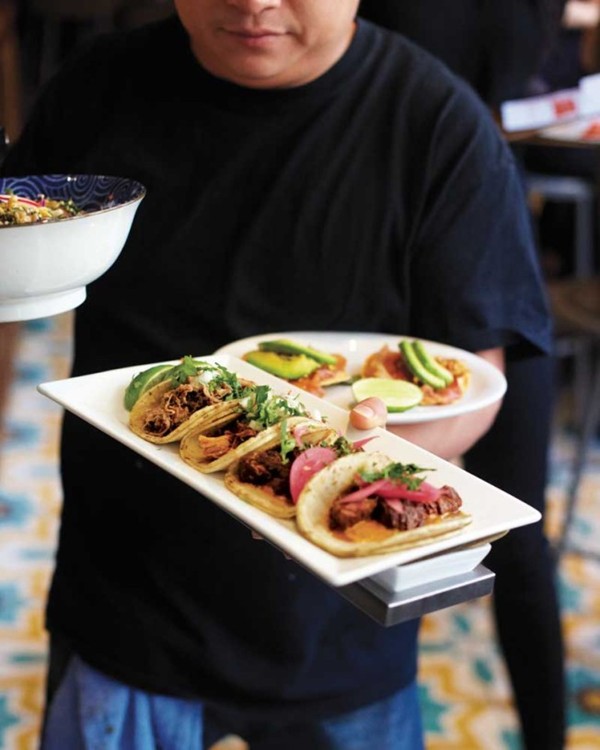Finger food
September 21, 2022 by DarcieMany foods seemingly taste better when eaten with your hands instead of with cutlery (fried chicken, pizza) and some only make sense to eat with your hands or fingers (potato chips/crisps, tacos). In Western countries, finger foods are often seen as a novelty but in many other cultures around the world, almost all foods are eaten with one’s hands and have been for centuries. The reasons and benefits behind this are explored in a recent article in The Guardian by Shahnaz Ahsan.

Ahsan begins by explaining the importance of handwashing in cultures where eating with one’s hands is the custom. “Guests are shown the utmost hospitality with a jug and basin being brought to the table, and the host pouring water over the guests’ hands,” she says. Why this custom persists when running water and sinks are commonplace has to do with ritual, and Ahsan notes that “while guests certainly can (and often do) wash their hands under the tap, the use of a jug and basin is a nod to how it used to be – and the status afforded to guests in such cultures.”
One benefit from communal eating, which is often practiced alongside the tradition of not using cutlery, is that it makes it easier to share food when unexpected guests arrive, says Ahsan. “Using hands to eat means that… there is no need to scrabble around for an extra fork if someone unexpectedly shows up at dinner time, reflecting the importance of communality in experiencing food.” Then there is the subjective experience that some foods just taste better when eaten with one’s hands or fingers. Ashan shares why eating dim biran (omelette with green chilies, coriander and onion) by hand appeals to her. “The act of mixing, methodically, rhythmically, and then eating, is meditative – almost an act of devotion in itself,” she says.
Categories
- All Posts (6940)
- Antipasto (2135)
- Author Articles (247)
- Book News (935)
- Cookbook Giveaways (983)
- Cookbook Lovers (257)
- Cooking Tips (109)
- Culinary News (299)
- Food Biz People (552)
- Food Online (791)
- Holidays & Celebrations (272)
- New Cookbooks (149)
- Recipes (1500)
- Shelf Life With Susie (231)
- What's New on EYB (133)
Archives
Latest Comments
- Atroyer7 on Danube Cookbook Review and Giveaway
- demomcook on What foods do you look forward to the most for each season?
- demomcook on Danube Cookbook Review and Giveaway
- Darcie on How cookbooks can help build resilience
- mholson3 on Danube Cookbook Review and Giveaway
- Rinshin on How cookbooks can help build resilience
- sarahawker on Danube Cookbook Review and Giveaway
- Sand9 on Danube Cookbook Review and Giveaway
- hankintoby29 on Heritage Cookies of the Mediterranean World – Cookbook Giveaway
- WBB613 on Feasts of Good Fortune Cookbook Giveaway